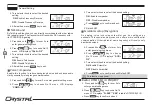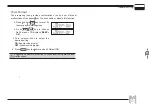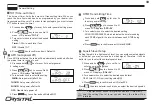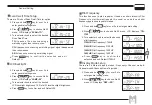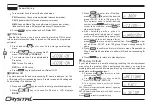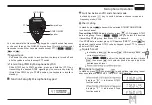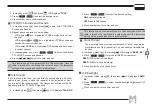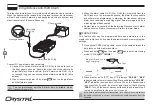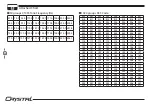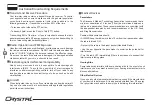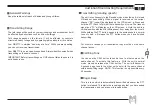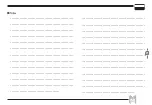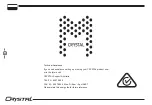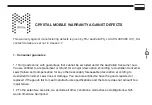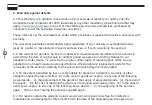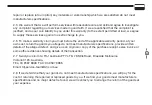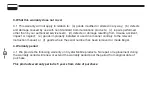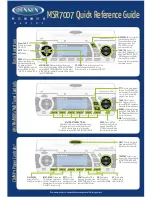
38
Australian Broardcasting Requirements
Channel 5 and 35 (paired for Duplex repeaters) are reserved as
emergency channels and should be used only in an emergency. CTCSS
and DCS will not operate on channels 5 and 35.
A list of currently authorised channels can be obtained from the ACMA
website in Australia and the MED website in New Zealand. Channel 11
is a calling channel generally used to call others and channel 40 is the
customary road vehicle channel. Once contact is established on the
calling channel, both stations should move to another unused “SIMPLEX”
channel to allow others to use the calling channel. Channels 22 and 23
are for Telemetry and Telecommand use, voice communications are not
allowed on these channels by law. Channel 9 and above are the best
choices for general use in Simplex mode.
Radiocommunications (Citizen Band Radio Stations)
Class Licence 2002
No licence is required to own or operate this radio in Australia and New
Zealand. The Radiocommunications (Citizen Band Radio Stations) Class
Licence 2002 contains the technical parameters, operating requirements,
conditions of licence and relevant standards for Citizen Band (CB)
radios. CB radios must comply with the class licence for their use to be
authorised under the class licence.
UHF channels and frequencies
IMPORTANT NOTE: The operation of your UHF radio in Australia and
New Zealand is subject to conditions in the following licenses: In Australia
the ACMA Radio communications (Citizen Band Radio Stations) and in
New Zealand by MED the General User Radio License for Citizen Band
Radio.
You may encounter operational issues changing over from 25kHz to
12.5 kHz channel spacing. Operating volumes can vary when receiving
wideband (5kHz deviation) transmissions on newer narrow band
equipment or narrow band (2.5kHz deviation) transmissions being sent
to older wideband equipment. Older and newer adjacent channels can
cause interference.
Summary of Contents for DB477C
Page 1: ...1 DB477C Version 3 ...
Page 39: ...39 Notes ...

